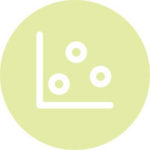Standardized Measurement

THE METHOD
Research teams often need to measure people’s attitudes on loyalty, usability, satisfaction luxury, desirability and brand affinity. These attitudes (often referred to as constructs) can be measured by having participants rate items on questionnaires.
While teams can create their own items that they think best describes a construct, standardized questionnaires are groups of items that have been gone through the process of psychometric validation. Consequently, standardized measures tend to perform better than homegrown ones. A standardized questionnaire is one that exhibits strong
- Reliability: Consistent responses
- Validity: Demonstrates that it measures what it intends to measure
- Sensitivity: Ability to discriminate between high and low levels of the construct of interest
Additionally, many standardized questionnaires have normalized databases that convert raw scores (e.g. an average of a 4.2) into percentile ranks (e.g. 75th percentile).
Examples of standardized questionnaires include:
- SUPR-Q: Website user experience quality
- SUS: System usability
- SEQ: Task-level ease
- UMUX-Lite: Short form of usability and utility
- TAM: Technology acceptance
We work with product teams to help create new instruments to use. We use both Classical Test Theory (CTT) serviceses and Item Response Theory (IRT) to identify the best items and wording to mathematically describe the constructs of interest.
THE OUTCOME
The deliverable is usually a new questionnaire or instrument and a detailed report on the reports and analysis over a period of time tracking the scores of the measure collected.